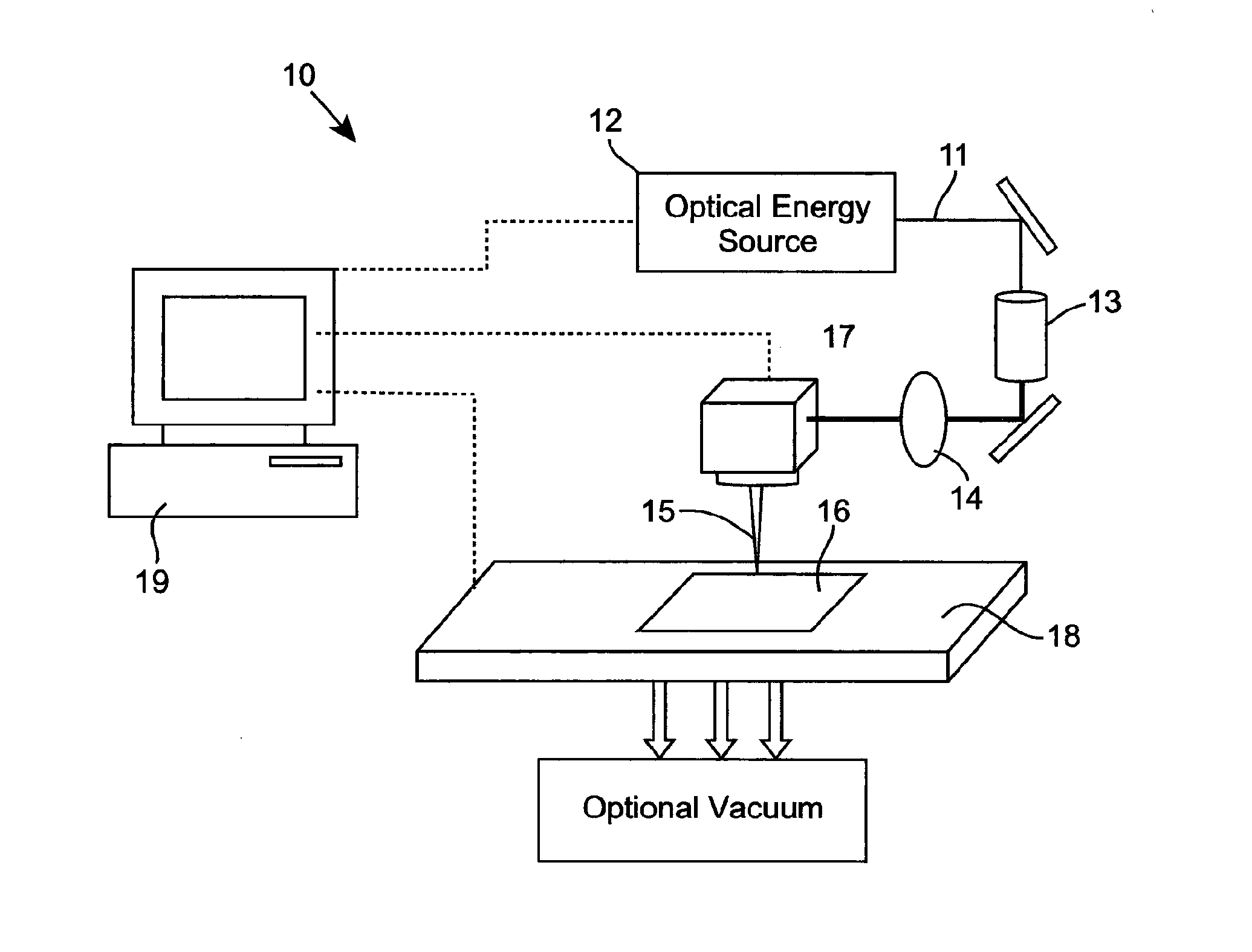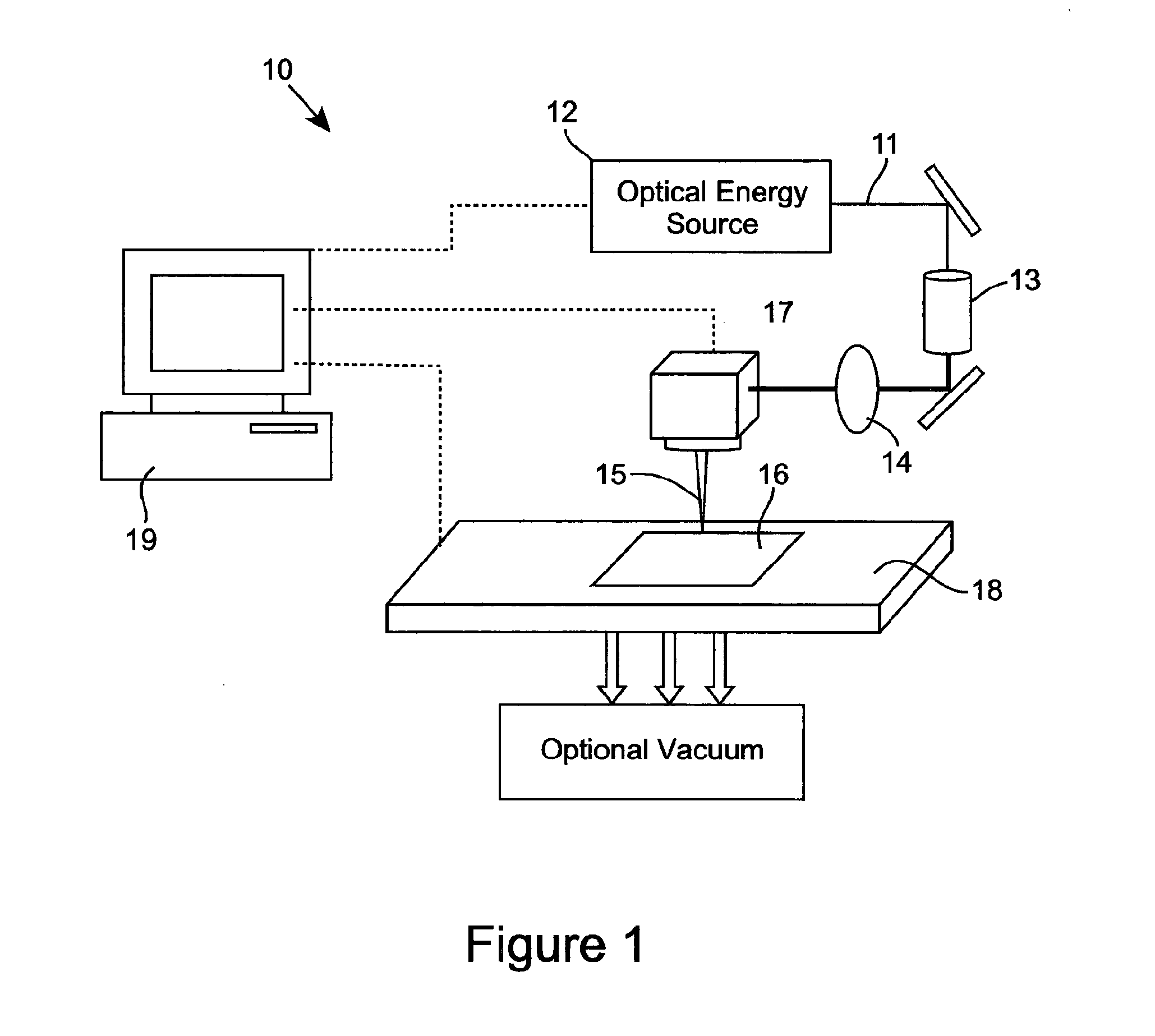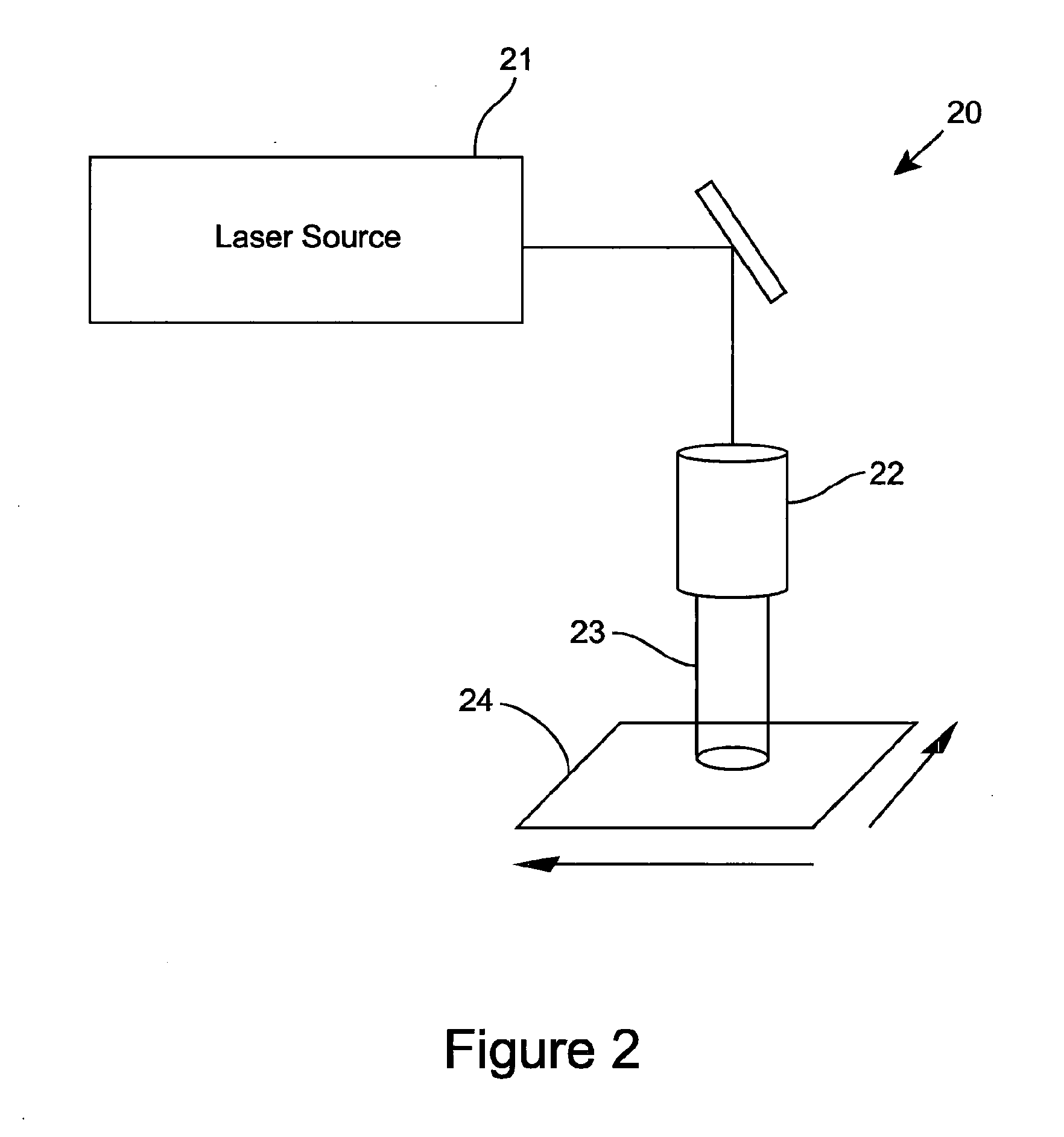Methods and Apparatus for Laser Cleaning
a laser cleaning and apparatus technology, applied in the field of methods, can solve the problems of high water and power consumption of machines, requiring subsequent drying, and process leaving the articles quite wet,
- Summary
- Abstract
- Description
- Claims
- Application Information
AI Technical Summary
Benefits of technology
Problems solved by technology
Method used
Image
Examples
working examples
[0146]FIG. 20 shows an example of a cotton fabric 300 having been contaminated with a dark oil from an engineering workshop. The piece of fabric is contaminated with a dark machine shop oil 302 and has been exposed to a pulsed laser source in a square region of approximately 15×15 mm dimension 304. The laser parameters include wavelength 1064 nm, pulse duration 20 nanoseconds and pulse energy of 800 uJ at a pulse repetition rate of 25 KHz. The output from the laser is focussed to spot diameter of approximately 30 um and scanned across the sample in a square pattern. The sample was soaked in water prior to cleaning which enhanced the process of contaminant removal.
[0147]FIG. 21a shows another example of a cleaned fabric sample 310 comprising a blue and white cotton shirt. The shirt, prior to cleaning with an apparatus and process according to the present invention, 312 had been contaminated with an orange coloured food stain 314. FIG. 21a shows the stained shirt after several attempt...
PUM
| Property | Measurement | Unit |
|---|---|---|
| Temperature | aaaaa | aaaaa |
| Fraction | aaaaa | aaaaa |
| Percent by mass | aaaaa | aaaaa |
Abstract
Description
Claims
Application Information
 Login to View More
Login to View More - R&D
- Intellectual Property
- Life Sciences
- Materials
- Tech Scout
- Unparalleled Data Quality
- Higher Quality Content
- 60% Fewer Hallucinations
Browse by: Latest US Patents, China's latest patents, Technical Efficacy Thesaurus, Application Domain, Technology Topic, Popular Technical Reports.
© 2025 PatSnap. All rights reserved.Legal|Privacy policy|Modern Slavery Act Transparency Statement|Sitemap|About US| Contact US: help@patsnap.com



